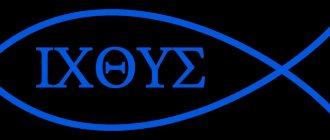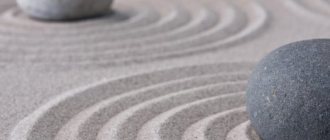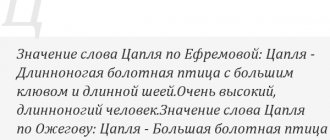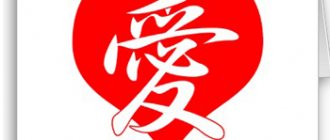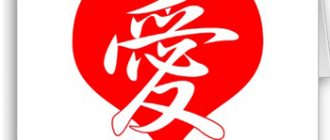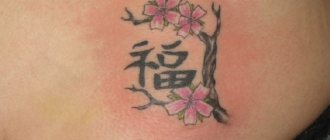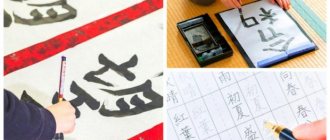Heaven (天 tian) is one of the fundamental categories of Chinese culture. China is often called the Celestial Empire. The Chinese emperor bore the title "Son of Heaven." It was believed that Heaven was giving him a Heavenly mandate to rule. Only the emperor had the right to make sacrifices to Heaven and was responsible before Heaven for the well-being of the people.
Round altar in the Temple of Heaven in Beijing. During the Ming and Qing eras, on the day of the winter solstice, the emperor performed a sacrifice ceremony here in front of the sacred tablet of Heaven.
Sky (tian)
In ancient Chinese texts, the word tian 天 was interpreted in different ways:
- supreme deity, highest power;
- the highest natural principle, a member of the Great Triad “Heaven-Earth-Man”;
- nature;
- natural principle in man, etc.
Sky-tian cannot in any way be correlated with the concept of God of the Abrahamic religions (Judaism, Christianity, Islam). God is a Person, and Heaven is an impersonal force. Tien is the highest world-building force, thanks to which the seasons change, day and night, the harvest ripens, etc.
There are several versions of the appearance of the cult of Heaven in China. According to one of them, the most authoritative, belief in Heaven as a higher power was widespread among the Zhou tribe, who in the 2nd millennium BC. settled on the northwestern outskirts of the Shang-Yin state (1600-1027 BC), later destroyed it and founded their own state under the rule of the Zhou dynasty (1045-221 BC).
The Yin people had a cult of the Supreme Ancestor Shang Di 上帝. Shan-di is translated as “Supreme Ancestor”, “Highest Deity”, “Supreme Ruler”. In ancient texts it is also simply called di 帝. According to some scholars, the character di 帝 originally meant burning a sacrifice, and then transformed into the deity to whom the sacrifice is made. Over time, Shang Di began to be revered as the patron deity of the Shang-Yin state. Under the Zhou people, the cult of Tian-di 天帝 (Heavenly Ancestor) arose, initially endowed with personal traits, and then with the impersonal, abstract Heaven Tian 天.
The hieroglyph tian 天 is already found in Yin fortune-telling inscriptions (2nd half of the 2nd millennium BC). Apparently, it goes back to the image of a person 人 ren, which is crossed by two horizontal lines: 天, that is, a person with outstretched arms (the hieroglyph for “big” 大 da) and the space above his head. Some researchers believe that this is an image of a man with a large head.
人 (ren, person) - 大 (yes, big) - 天 (tian, sky).
... The perfect sages of antiquity, [listening] to loud sounds [in nature] (xiao), comprehended Heaven and Earth with their help and called [these sounds by names or] titles (hao). [They listened] to the singing [of birds and the cries of animals], named them [on this basis] and called them by names. The name (min) expresses, [thus], singing (min) and naming (min). The title (hao) expresses [thus] loud sound (xiao) and comprehension (xiao). So, loud sounds (xiao), with the help of which Heaven and Earth are comprehended, are [names or] titles (hao). The singing [and cries of animals] (min), with the help of which names were given, are names (min)... Names and titles, although they differ in sound, have the same basis. Names and titles are [a way] to penetrate the thoughts of Heaven. The sky does not speak, it forces people to express its thoughts. Heaven does not act, it forces people who are [in its power] to act. Thus, names are [the way in which] perfect sages expressed the thoughts of Heaven. [And therefore], they cannot but be [subjected] to deep consideration.
The receipt by the sovereign of a heavenly command is sent down [according to] the plans of Heaven. Therefore, his title is “Son of Heaven.” He must look to Heaven as to a father and serve Heaven [in accordance with] the path of filial piety. (Dong Zhongshu, “Chun-qiu fan-lu”, chapter “Deep study of the meaning of names and titles”)
Hieroglyph structure
At first glance, the hieroglyph seems to be a chaotic collection of various lines and dots. However, it is not. There are several basic elements that make up a hieroglyph. First of all, these are the features that make up graphemes. Graphemes, in turn, form a more complex sign.
♦ On the subject: Gateway to Calligraphy: Eight Principles of Writing the Character Yun 永
Traits
Any hieroglyph consists of a certain set of features. The traits themselves have no lexical meaning or reading. There are four types of traits and more than two dozen varieties:
- Simple (basic) features: horizontal, vertical, inclined left and right, folding left and right, special points.
- Features with a hook: horizontal, vertical (can be with a hook to the left or a hook to the right), folding to the right.
- Broken features: the line changes direction one or more times, has a complex configuration.
- Broken features with a hook.
There are also slightly different classifications of traits, but this does not change the general essence. The lines in hieroglyphs are written in a strictly defined sequence: “first horizontal, then vertical, first folding to the left, then folding to the right, first upper, then lower, first left, then right, first in the middle, then on both sides of it, first we go inside , then we close the door.”
In the past, hieroglyphs consisted of a large number of strokes, and remembering them was not easy. Therefore, one of the goals of the writing reform carried out by the Chinese government in the 60s of the 20th century was to simplify the characters by reducing the number of strokes.
A similar simplification of hieroglyphs was carried out in Japan. However, simplified Japanese characters do not always correspond to Chinese ones, although knowing the full and simplified versions of Chinese characters, it is usually easy to understand the simplified Japanese ones. For example, the word "library" written in Simplified Chinese: 图书馆, Long Chinese: 圖書館, and Japanese: 図書館. In Chinese it is read túshūguǎn, in Japanese - toshokan.
In Taiwan, Singapore and some other places, the full version of writing hieroglyphs is still used. And in mainland China you can find texts written in full hieroglyphs. In addition, hieroglyphs with several dozen features have survived to this day. As a rule, they are rarely used and therefore have not been simplified.
The most difficult character to write is considered to be biáng (byang), which consists of more than 60 strokes. It refers to a type of noodle popular in Shaanxi Province. Outside the region, this hieroglyph is practically not used, and therefore it is absent from dictionaries and computer fonts.
The hieroglyph "byan" is considered the most difficult to write. They say that students at one of the institutes in Chengdu were systematically late for classes. And the professor, angry with them, ordered everyone to write the hieroglyph “byan” a thousand times. Not everyone was able to do this. And everyone tearfully asked for forgiveness, promising not to be late for classes in the future.
Graphemes and clues
Graphemes are formed from traits - simple hieroglyphic signs with stable lexical meanings. These are the basic characters of Chinese hieroglyphic writing that make up Chinese characters. They are the most ancient and express the basic elements of the surrounding world and man.
Examples of graphemes: man 人 rén, woman 女 nǚ, child 子 zǐ, sun 日 rì, sky 天 tiān, earth (soil) 土 tǔ, etc.
♦ Read more about the history of Chinese writing and the PRC reform to simplify hieroglyphs in the article “Chinese characters from antiquity to the present day.”
There are about 300 graphemes in total; linguists differ in their estimates regarding their exact number. Most graphemes are used in modern Chinese writing as the most common characters. Graphemes make up about 10% of the most commonly used hieroglyphs.
In addition to graphemes, there are keys . Keys are the main classification marks. The standard list of keys contains 214 characters. It includes many graphemes and some features that do not have a fixed meaning. Thus, not all graphemes are keys and not all keys are graphemes.
For a long time, a list of 214 keys constituted the so-called hieroglyphic index, according to which hieroglyphs were ordered in Chinese dictionaries. However, after simplified hieroglyphic writing was introduced into the PRC, some characters underwent either partial simplification or structural changes.
For students of languages with hieroglyphic writing, knowledge of the key table is mandatory.
Complex signs
Most hieroglyphs consist of two or more graphemes. Traditionally, they are divided into two large groups: ideographic signs and phonideographic signs.
Ideographic signs
Ideographic signs (ideograms) consist of two or more graphemes. In them, the meaning of the hieroglyph is derived from the semantics of the graphemes included in it, but the reading of the hieroglyph is in no way connected with them. In modern Chinese, the share of ideographic signs is about 10%.
Examples of ideograms:
- 好 hǎo (good): 女 nǚ (woman) and 子 zǐ (child)
- 明 míng (understanding, enlightenment): 日 rì (sun) and 月 yuè (moon)
- 休 xiū (rest): 人 rén (person) and 木 mù (tree)
- 众 zhòng (crowd): three people 人 rén
- 森 sēn (forest, thicket, dense): three trees 木 mù
Phonoideographic signs
About 80% of hieroglyphs are so-called phonideographic signs, or phonideograms. Hieroglyphs of this type usually consist of two parts. One part is called the semantic factor , or hieroglyphic key . It indicates that the hieroglyph belongs to a certain group of semantically related characters and thereby suggests an approximate meaning.
The other part of the hieroglyph is called the phonetic and suggests an approximate reading. After the reform of Chinese writing, the number of phonideograms consisting of two graphemes increased significantly, which greatly facilitated the memorization of hieroglyphs.
Examples of phonoidograms:
- 妈 mā (mother): 女 nǚ (woman - key) and 马 mǎ (horse - phonetician)
- 性 xìng (nature, character, gender): 心 xīn (heart, consciousness - key) and 生 shēng (birth - phonetician)
- 河 hé (river): 水 shuǐ (water, in the hieroglyph “river” the element “water” in the left position changes to a flap with two dots - key) and 可 kě (modal verb of possibility or obligation - phonetic)
However, in the process of development, the reading of many hieroglyphs has changed and nowadays it is not always possible to guess even the approximate reading of a hieroglyph. Especially when it comes to dialects of the Chinese language.
Son of Heaven (tianzi)
In Chinese culture, Heaven was seen as the source of imperial power. Until 1912, the rulers of China bore the title "Son of Heaven" (Tianzi 天子). The emperor was believed to support the interaction between the three members of the Great Triad - Heaven, Earth and people, which is reflected in the character wang 王 - ruler. As the high priest, only he could make sacrifices to Heaven and Earth. His sacrifices to the spirits of the earth and grain ensured the prosperity of the entire Celestial Empire. The emperor also exemplified filial piety by making sacrifices at the Ancestral Temple.
The life of the emperor as the Son of Heaven was clearly regulated. He spent most of his time in his palace, hidden from the eyes of his subjects. Only those close to him had the right to see the emperor. His symbol was the Dragon with five claws.
The Temple of Harvest is the central building of the Temple of Heaven in Beijing. On the day of the winter solstice, the emperors of the Ming and Qing dynasties performed a ceremony of sacrifice to Heaven here.
How many hieroglyphs are there in total?
The character in the classical written language Wenyan 文言 usually meant a whole word. In modern Chinese, words mostly consist of one or two, rarely three or more characters. Therefore, there are a lot of hieroglyphs.
In 1994, the dictionary “Sea of Chinese Characters” by Zhonghua Zihai 中華字海 was published, which contains 85,568 characters! True, the vast majority of them can be found only a few times in classical literary works. Conventional bilingual dictionaries contain about 6-8 thousand hieroglyphs, among which there are also many rare ones. More complete explanatory dictionaries contain about 10-20 thousand characters.
It is believed that to understand 80% of modern ordinary Chinese text , it is enough to know the 500 most common characters, knowledge of 1000 characters gives an understanding of approximately 91% of the text, and 2500 characters - 99% of the text. In order to pass the highest level Chinese language exam for foreigners, HSK 6, you need to know just under 3,000 characters. To read specialized scientific or classical literature, you need to understand a larger number of hieroglyphs.
However, you must keep in mind that even if all the hieroglyphs in the text are familiar to you, you will not always completely understand the meaning of what is written. You also need to know words—various word combinations of hieroglyphs. The Chinese language uses quite a lot of abbreviations, when stable phrases of several characters are reduced to shorter ones.
For example, the phrase “Beijing University” 北京大学 Běijīng dàxué is shortened to 北大 Běidà, which literally means “northern big”. Another difficulty in the Chinese language is the use of chengyu成语, an idiom typically consisting of four characters. If each sign is translated literally, the meaning of what is said may not be understood. There are special Chenyu dictionaries, as well as collections of stories that explain the meaning of the most famous idioms. Translations of chengyu can also be found in dictionaries.
♦ On topic: What is chengyu
In the Japanese language, there is a mandatory list of Joyo kanji characters 常用漢字, accepted by the Japanese Ministry of Education as sufficient for everyday use.
It consists of 2,136 kanji (hieroglyphs) and includes 1,006 kyoiku kanji, which are studied by students in 6-year elementary school and 1,130 kanji, which are taught in middle school.
Tones
Chinese tones cannot simply be ignored. The meaning of the word depends on them. Just like in Russian, the meaning of the word “castle” depends on the stress. Imagine if all the words were the same? And there would be not two options: stressed/unstressed syllable, but four.
It's not as difficult as it seems. You don't need an ear for music, just practice is enough.
Tone chart with pronunciation
The database of syllables with pronunciation - the peculiarity is that the syllable is pronounced not by a robot, but by native speakers.
Are these really significant difficulties?
Yes. For comparison: with regular classes at a level sufficient for everyday communication, you can learn English in a year (if your native language is Russian). When learning Chinese, it will take about three years. On the other hand, you can study English for ten years.
In fact, this is a philosophical question. It is possible to learn Chinese. Many people in the world (about a quarter of the world's population, if that) have done this. It is no more complicated than any other science. You learned Russian, and then somehow graduated from school and, perhaps, university. The main thing here is not intelligence or talent, but simply continuity. If you study, you will learn.
Meanings of flowers in Chinese culture
The Chinese perceive the world around them differently, which makes it difficult for Europeans to understand what color the interlocutor is mentioning during a conversation. It is worth remembering that two hieroglyphs are used to enhance or mute the shade:
- 深 (shēn) – dark.
- 浅 (qiǎn) – light.
These symbols should be placed with the base color to emphasize the intensity of the shade. Specifically, 浅 + 桔黄 (qiǎn + jú huáng) can be translated as light orange or yellowish. By placing the character 深 (dark) with the character 橙 (cheng), the result is a shade of dark orange.
In China, colors and shades must be used carefully, since the Celestial Empire has its own ideas about the symbolism of color and its sacredness in culture, civilization, and everyday life.
How to remember reading hieroglyphs
Although in the Chinese language most of the characters fall into the category of phonoid ideograms, however, the character does not contain a direct indication of reading, like phonetic languages. Another difficulty of the Chinese language is the widespread phenomenon of homophony: due to the limited number of syllables (just over 400), different characters can be read the same, which creates certain difficulties in understanding spoken language. However, it is very convenient to memorize a whole series of hieroglyphs that have the same reading.
♦ Read more: Homophones in Chinese and some traditions associated with them
In the early days of my study of the Chinese language, I usually remembered the tone by some line: a horizontal line at the top of the character meant the first tone, a slanted line to the left meant the second tone, a horizontal line at the bottom meant the third tone, and a slanted or tilted line to the right meant the fourth tone. Although there were hieroglyphs where the required line was not found.
A completely different situation arises in the Japanese language, where there are two types of reading hieroglyphs: onnoe, which came from the Chinese language, and kunnoe, traditional Japanese. Thus, one hieroglyph can have up to 5 or more different readings! In different phrases, hieroglyphs can be read differently.
For example, in Japanese the words “yesterday” 昨日 and “tomorrow” 明日, which contain the same sign 日 (day, sun), are read completely differently: kino: and ashita, respectively. In the phrase “every day”, “daily” 毎日 will be read mainichi, “third number”, “three days” 三日- mikka. Although, in theory, all four words should end the same.
That is why the only effective way to remember reading hieroglyphs in both Chinese and Japanese is by cramming : repeating them repeatedly to yourself and out loud, trying to remember the melody. In the Chinese language, in my opinion, this is easier to do due to the presence of phonideograms and the general repetition of syllables; in Japanese it is a little more difficult.
Is it easy to learn Japanese characters after Chinese?
For those who speak Chinese, Japanese seems simpler from the outside, at least in terms of hieroglyphs. Indeed, a significant part of the characters in Japanese are written in the same way as in Chinese or very similar. Especially if you know the full spelling of Chinese characters. However, as always, the devil is in the details. I’ll tell you what I discovered already in the early stages of my study of the Japanese language.
♦ On the subject: Starting to learn Japanese, or a new hobby for sinologists
First of all, it is worth keeping in mind that the meaning of characters in Japanese does not always exactly correspond to Chinese. For example, the word 下さい kudasai, which means “please”, begins with the character 下, which in Chinese means “lower”, “below”, “to go down”. And without knowing the Japanese language, only the hieroglyph can be translated incorrectly.
Another thing that will complicate the life of a Sinologist when studying Japanese is the numerous readings of Japanese characters, which I already wrote about above. And, of course, at least at first, when you see a familiar character, you want to read it in Chinese.
Therefore, when studying Japanese, a Chinese language expert will still have to learn hieroglyphs, albeit to a slightly lesser extent.




